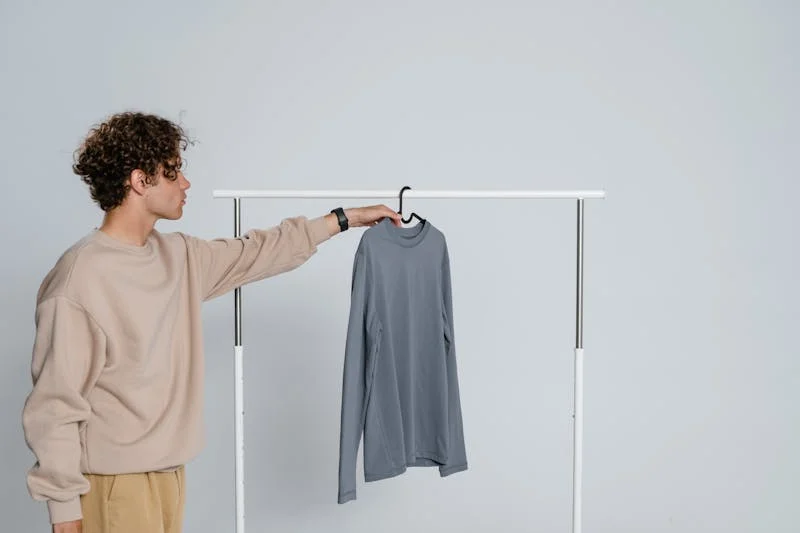
In a world that’s increasingly aware of its environmental footprint, fashion is following suit by embracing sustainability. Gone are the days when being stylish and eco-friendly were seen as mutually exclusive. Today, sustainability and fashion can go hand in hand, and the best sustainable fashion trends are a reflection of this shift in mindset. From eco-friendly fabrics to timeless designs, let’s dive into the top sustainable fashion trends that are both stylish and earth-conscious.
Why Sustainable Fashion is Gaining Popularity
The Rise of Conscious Consumerism
Sustainable fashion is no longer a niche market but a growing global movement. As consumers become more aware of the negative environmental impacts of the fashion industry, they’re demanding change. The fashion world has been waking up to the reality of fast fashion’s consequences, such as overconsumption, textile waste, and unethical labor practices. As a result, more people are choosing to invest in quality, long-lasting pieces rather than chasing trends.
The Environmental Impact of Fashion
Why Traditional Fashion Needs to Evolve
The fashion industry is one of the most polluting industries globally, responsible for over 10% of global carbon emissions. The overproduction of cheap clothing leads to vast amounts of waste and pollution. Furthermore, materials like polyester, which are commonly used in fast fashion, take hundreds of years to degrade, contributing to landfill overflow.
Sustainable fashion aims to reverse this trend by adopting ethical practices, reducing waste, and using eco-friendly materials, ultimately lowering fashion’s ecological footprint.
The Benefits of Sustainable Fashion
How Sustainable Fashion Supports the Planet and Communities
By embracing sustainable fashion, we’re not just protecting the planet, we’re also supporting local communities and artisans. Many sustainable brands prioritize ethical labor practices, ensuring fair wages and safe working conditions for workers. Additionally, sustainable fashion encourages the use of natural, biodegradable materials that are much gentler on the environment than synthetic alternatives. The movement is about rethinking fashion as an investment in both the planet and the people who make our clothes.
Top Sustainable Fashion Trends for This Year
Now that we’ve discussed the importance of sustainability in fashion, let’s explore the top trends that are dominating the sustainable fashion scene. These trends combine style with responsibility, allowing you to look great while contributing to a greener future.
Eco-Friendly Fabrics
Why Fabric Choice Is Critical for Sustainability
One of the most important aspects of sustainable fashion is the choice of fabrics. Materials can have a significant environmental impact, so opting for eco-friendly options is key. Whether it’s organic cotton or recycled fabrics, the fabrics you wear can either contribute to or help reduce fashion’s environmental footprint.
Organic Cotton and Hemp
Organic cotton and hemp are two of the most sustainable fabric choices available today. Organic cotton is grown without harmful pesticides and synthetic fertilizers, which reduces soil degradation and water contamination. Hemp is another eco-friendly fabric, as it requires very little water and is naturally pest-resistant. Both materials are durable, breathable, and biodegradable, making them perfect choices for a sustainable wardrobe.
Tencel and Recycled Fabrics
Tencel (also known as lyocell) is a fiber made from sustainably sourced wood pulp, which is produced in a closed-loop process that recycles water and solvents. Tencel is biodegradable, soft to the touch, and has a low environmental impact compared to conventional fabrics. Similarly, recycled fabrics—such as those made from plastic bottles or post-consumer waste—help reduce the need for virgin materials and lower textile waste.
Slow Fashion
The Movement Against Fast Fashion
Slow fashion is a direct response to the fast fashion industry, which promotes rapid production and constant consumption. Rather than chasing trends that quickly go out of style, slow fashion encourages thoughtful, deliberate purchases of long-lasting items. The goal is to invest in quality pieces that stand the test of time and remain stylish year after year.
Creating Timeless Wardrobe Staples
Investing in classic, timeless pieces is one of the most effective ways to embrace slow fashion. Think of high-quality basics like a well-tailored blazer, a white button-down shirt, or a pair of durable jeans. These items can be worn in various ways and will never go out of style, ensuring that your wardrobe is both sustainable and versatile.
Building a Capsule Wardrobe
A capsule wardrobe is a minimalist approach to fashion, where you curate a collection of essential, high-quality pieces that can be mixed and matched to create multiple outfits. By focusing on fewer items, you reduce overconsumption and ensure that each piece you own serves a purpose. The capsule wardrobe is a perfect representation of slow fashion—quality over quantity.
Thrift Shopping and Vintage Fashion
Why Secondhand Fashion is a Sustainable Choice
Thrift shopping and vintage fashion are two of the most sustainable ways to build your wardrobe. By purchasing secondhand clothing, you’re keeping garments in circulation and out of landfills, reducing the demand for new production. Vintage fashion is also an excellent way to find unique, high-quality items that are often more durable than modern fast fashion.
The Thrill of Thrifting
One of the most exciting parts of thrift shopping is the treasure hunt aspect. Whether it’s a designer piece or a hidden gem, thrifting allows you to find one-of-a-kind items at a fraction of the price. Plus, it’s a sustainable choice that reduces textile waste and supports a circular fashion economy.
Vintage Clothing as an Investment
Vintage clothing isn’t just a sustainable choice—it’s also an investment. Many vintage pieces, especially those from well-known designers or eras of high craftsmanship, appreciate in value over time. Investing in vintage fashion is a smart way to build a sustainable wardrobe that also holds monetary value.
Upcycling and DIY Fashion
How to Refresh Old Garments and Make Them New Again
Upcycling is the art of transforming old, worn-out clothes into something new and beautiful. It’s a great way to reduce waste and breathe new life into garments that might otherwise be discarded. Simple projects like turning an old shirt into a tote bag or adding patches to a pair of jeans can completely change the look and function of an item.
The Basics of Upcycling
Upcycling can be as simple as cutting a pair of old jeans into shorts or as intricate as sewing a new design into a dress. The key to successful upcycling is creativity and a willingness to experiment. Even small modifications, like adding embellishments or dyeing an old piece, can result in something fresh and stylish.
Repairing Clothes Instead of Discarding
Before tossing out damaged garments, try repairing them. Learning basic sewing skills, such as mending tears or replacing buttons, can extend the life of your clothes and reduce waste. Repairing clothes is an easy, effective way to adopt sustainable fashion without spending a fortune.
Ethical and Transparent Brands
The Importance of Supporting Responsible Fashion Labels
Supporting brands that prioritize sustainability is one of the most impactful ways to encourage the fashion industry to become more ethical. Ethical fashion brands prioritize fair wages, safe working conditions, and environmentally responsible practices. By choosing these brands, you help create a demand for more sustainable practices in the industry.
Brands Leading the Way
Some brands are leading the charge in sustainable fashion, including Patagonia, Reformation, and Stella McCartney. These brands are committed to using eco-friendly materials, reducing waste, and ensuring ethical labor practices. Supporting them helps promote a greener, more ethical fashion industry.
What to Look For in a Sustainable Brand
When choosing sustainable brands, look for transparency. The best brands will openly share their sourcing practices, labor conditions, and environmental impact. Certifications like Fair Trade, Global Organic Textile Standard (GOTS), and B Corp are also good indicators of a brand’s commitment to sustainability.
Conclusion
Sustainable fashion is no longer just a trend—it’s a movement that’s reshaping the way we think about clothing. By embracing eco-friendly fabrics, opting for timeless pieces, thrifting, upcycling, and supporting ethical brands, you can create a wardrobe that’s both stylish and sustainable. Every small step counts, and together, we can make fashion a force for good in the world.

FAQs
- What are the benefits of sustainable fashion? Sustainable fashion helps reduce environmental impact, supports ethical labor practices, and promotes the use of eco-friendly materials. It also encourages longer-lasting clothing, reducing waste.
- How can I start building a sustainable wardrobe? Start by investing in quality, timeless pieces, shopping secondhand, and choosing brands that prioritize sustainability. Also, consider upcycling old garments to give them new life.
- Is vintage fashion truly sustainable? Yes, vintage fashion is sustainable because it keeps clothing in circulation and reduces the need for new production, minimizing waste and environmental impact.
- What are some eco-friendly fabrics to look for? Look for organic cotton, hemp, Tencel, recycled polyester, and other biodegradable materials. These fabrics are produced with less environmental harm.
- Can I still be fashionable while embracing sustainability? Absolutely! Sustainable fashion doesn’t mean sacrificing style. By focusing on classic, high-quality pieces and incorporating secondhand or upcycled items, you can stay on-trend and eco-conscious.





